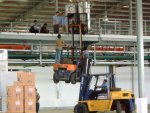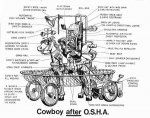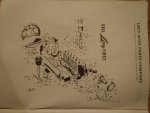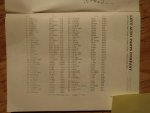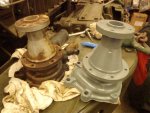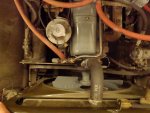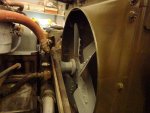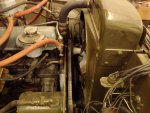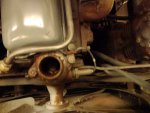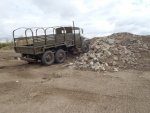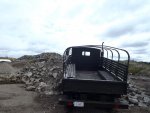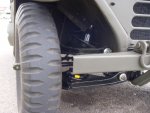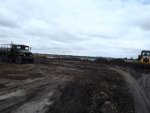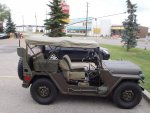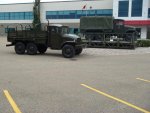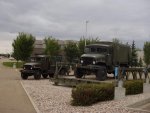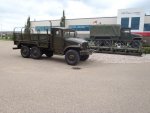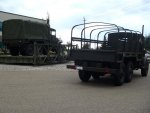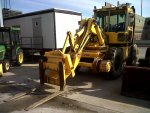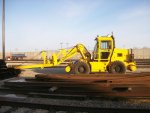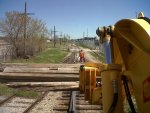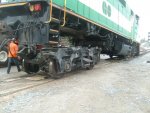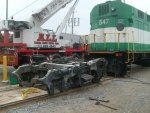Water Pump Safety
Sean11, we did a hazard assessment and the truck was high enough to require railings. We need lanyards with safety lines and Job Procedures for the use of ladders. Crawling under the hood in a tight space not normally occupied by a person meant a confined space entry permit was required. Demonstrating the ability to 'rescue' a person under the hood we need to set up a pulley system from an overhead crane and now that we have an overhead hazard, need hard hats. Due to the presence of gas, fire retardant clothing and safety glasses are required. Fire suppression equipment must be present and working.
Emergency Preparedness Plan is complete with 'working alone procedure' set up as contact every hour with outside party. Communication devices are in order, within reach and emergency contact numbers are displayed. Muster point is by the sign, the washroom is over there and the first aid and fire exits are here, here and here.
A pile of MSDS sheets came out of the files for the ten different fluids and greases we have in the truck and a lock-out tag is hung on the ignition switch. The fluid drained from the radiator will be contained, strained and re-used however a spill kit is next to the project and floor drains are skirted.
I cut myself setting up the safety rail so I told my supervisor and he took me over to the first aid kit. He applied a band-aid, recorded it in the first aid tracking book then we sat at the table to fill out an incident report. About an hour later we shut down the safety rail project and brought the entire crew into a big room. We explained the incident to the crew, so they would not hurt themselves in the same manner. The boss made them sign a tool-box meeting sheet acknowledging that the company told them about the incident and performed diligently by having them endorse the document that contained factual information about the incident.
After the incident report and the tool box meeting sheet was submitted to the office the President of the company looked over the documents. He signed and dated them, then made a small note on the recommendations section of the page. Review "Safe Work Practices" and "Job Procedures" for installing safety rails on the M135.
Realizing that the training for the crew to do such a task was not complete we called the crew back in the big room for a job hazard analysis. From that analysis we identified the severity, developed steps to control the hazards and involved the entire crew in the development of a written procedure to do the job safely.
With a new 'Job Procedure' being added to the Safety manual the President arranged for all staff to be at one location at one time. He reviewed the incident with the entire company, presented the new "Job Procedure" for a peer review and asked if anyone had suggestions for improvements for the M135 Safety Rail Installation Procedures.
With all agreeing to the document, another tool box meeting sheet prepared by the President, was signed by all personnel.
The employee 'training tracking' sheets were pulled from their over-sized safety binders and it was documented that they reviewed the job procedure for M135 Safety Rail Installation.
We have placed a stop work order on the project until all safety recommendations have been implemented. Once that happens we will perform an 'inspection' on the work area. We can then document that the required changes are in place and the job procedure is available for employee review.
Once we demonstrate the new job procedure to the employees, we can watch them perform the task. Once they demonstrate that they can complete the M135 Safety Rail project, we can bring them back in the big room to sign their training tracking sheets indicating that they can competently perform the task.
We still have not turned a bolt on the water pump and expect sometime next week, when all the information to perform the task is compiled, we will get the safety railing up.
Five minutes after I cut myself I was able to remove the bandage as my 1/4 long scratch did not bleed.



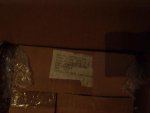
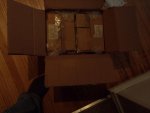
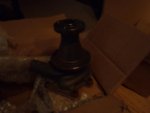
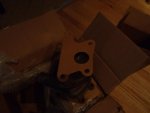
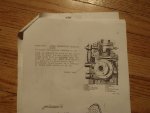
 Who else didn't make it to the bathroom after reading the above?
Who else didn't make it to the bathroom after reading the above?
